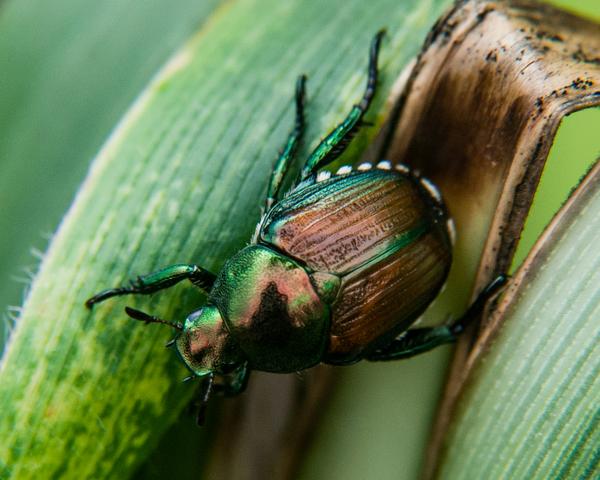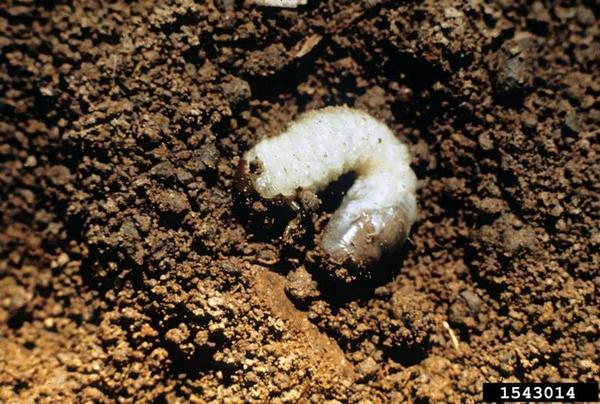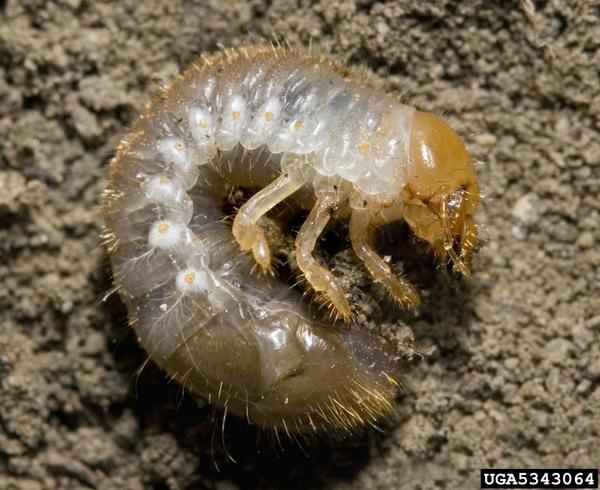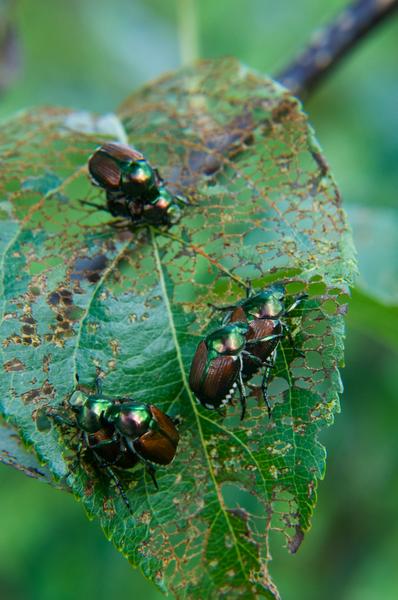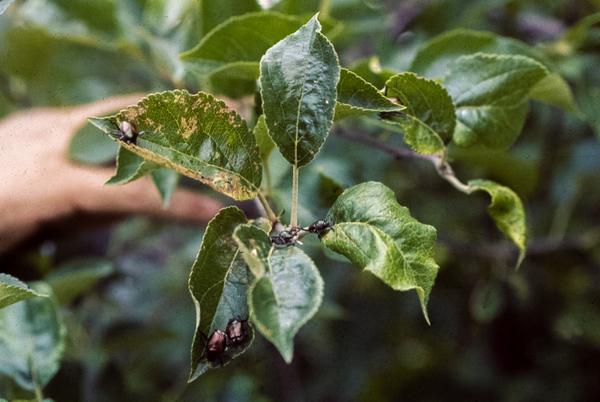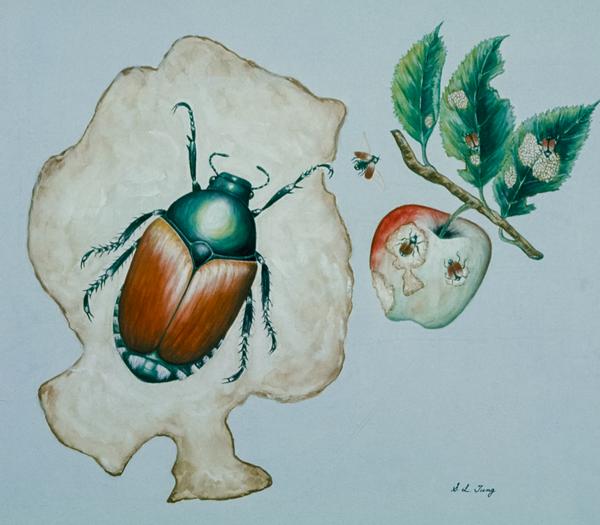Background and Description
The Japanese beetle (Popillia japonica) is found throughout most of the eastern US and in parts of the West. It was accidentally introduced from Japan into New Jersey in 1916.
Adult beetles are about 5/8 inch (16mm) long, metallic green with red-brown wing covers, and have a series of white spots along the sides and tip of the abdomen. Pupae are cream-colored (sometimes with a red tint) and 1/2 inch (12.5mm) long, and larvae ("grubs") are white and range from 1/16 to 11/4 inch (1.5 to 32mm) long.
Life history
Japanese beetles overwinter as larvae in the soil and pupate in June. The majority of adults emerge in July, when (especially on warm, sunny days) adults are easily seen flying around, feeding on fruit and foliage, and mating. Females then lay white spherical eggs 2 to 6 inches (5 to 15 cm) deep in the soil. Eggs hatch after 8 to 9 days, and immature grubs then develop in the soil until it begins to cool down in autumn. Then they stop feeding and burrow to a 4 to 8 inch (10 to 20 cm) depth where they remain until temperatures warm again in spring. There is usually only one generation per year.
Damage
Adults attack fruit by chewing irregular holes in it, sometimes to the point that fruit is almost entirely consumed. Foliage is skeletonized until there is no leaf tissue remaining between the veins. Larvae feed on the roots of grass and other plants, causing the above-ground portion of the plant to turn brown.
Japanese beetles attack a wide variety of trees, shrubs, and field crops.
Monitoring and Control
Adult Japanese beetles are strong fliers and often appear suddenly; therefore, protecting fruit and foliage requires killing beetles in the adult stage. However, if an orchard has a history of problems, use insecticides before the beetles become too abundant, as high aggregations of beetles tend to attract other beetles from afar. For the same reason, homeowners with fruit trees are NOT advised to erect commercially available Japanese beetle "traps," as they often serve only to attract more beetles than they capture.
See the "Relative Effectiveness of Insecticides and Miticides" section of the Integrated Orchard Management Guide for Commercial Apples in the Southeast for the most current control guidelines.
Publication date: Feb. 23, 2015
N.C. Cooperative Extension prohibits discrimination and harassment regardless of age, color, disability, family and marital status, gender identity, national origin, political beliefs, race, religion, sex (including pregnancy), sexual orientation and veteran status.

